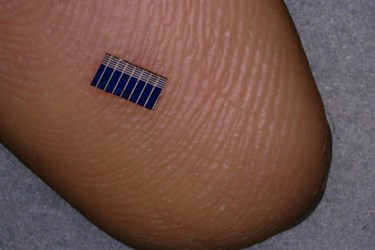High-capacity sodium-ion could replace lithium in rechargeable batteries
Scientists of the University of Birmingham are paving the way to swap the lithium in lithium-ion batteries (LIB) with sodium.

With a rising demand for electric vehicles (EVs), finding a replacement for this expensive and sparse material is becoming a particular area of interest, as the need for a reliable rechargeable battery becomes more apparent.
According to the Birmingham scientists, sodium is inexpensive and can be found in seawater – so is virtually limitless. However, sodium is a larger ion than lithium, so it is not possible to simply "swap" it for lithium in current technologies. For example, unlike lithium, sodium will not fit between the carbon layers of the ubiquitous LIB anode, graphite.
The scientists needed to find new materials to act as battery components for sodium-ion batteries that will compete with lithium for capacity, speed of charge, energy and power density.
Running quantum mechanical models on supercomputers, Dr Andrew Morris's team from the University of Birmingham's Department of Metallurgy and Materials was able to predict what happens when sodium is inserted into phosphorus.
In collaboration with Dr Lauren Marbella and Professor Clare Grey's team at the University of Cambridge, who performed the experiments which have verified the predictions, they found that the phosphorus forms helices at intermediate stages of charging.
The researchers say they identified the final composition of the electrode, which provides a final capacity of charge carriers seven times that of graphite for the same weight, and gives fresh insights into how to make high-capacity sodium-ion anodes.
在线留言询价
- 一周热料
- 紧缺物料秒杀
| 型号 | 品牌 | 询价 |
|---|---|---|
| RB751G-40T2R | ROHM Semiconductor | |
| TL431ACLPR | Texas Instruments | |
| MC33074DR2G | onsemi | |
| BD71847AMWV-E2 | ROHM Semiconductor | |
| CDZVT2R20B | ROHM Semiconductor |
| 型号 | 品牌 | 抢购 |
|---|---|---|
| STM32F429IGT6 | STMicroelectronics | |
| BP3621 | ROHM Semiconductor | |
| BU33JA2MNVX-CTL | ROHM Semiconductor | |
| IPZ40N04S5L4R8ATMA1 | Infineon Technologies | |
| ESR03EZPJ151 | ROHM Semiconductor | |
| TPS63050YFFR | Texas Instruments |
- 周排行榜
- 月排行榜
AMEYA360公众号二维码
识别二维码,即可关注


请输入下方图片中的验证码:























